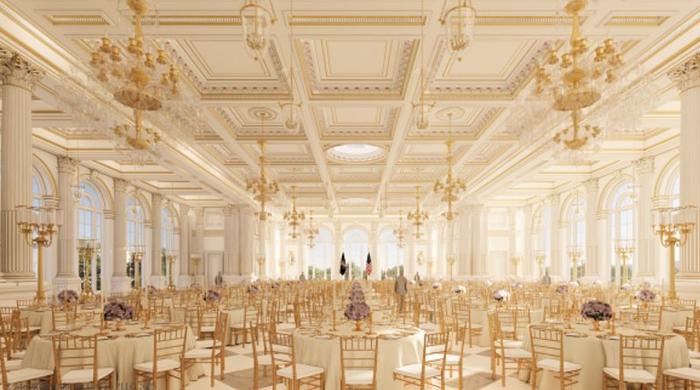
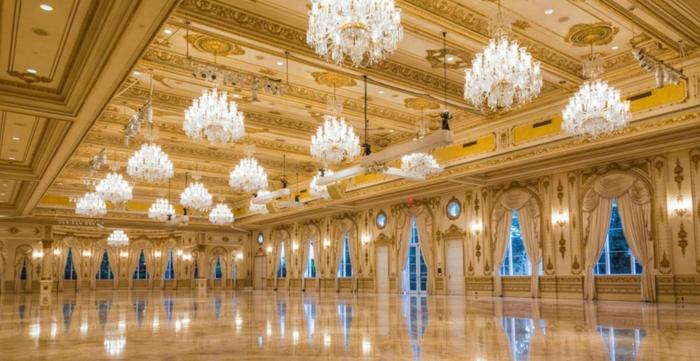
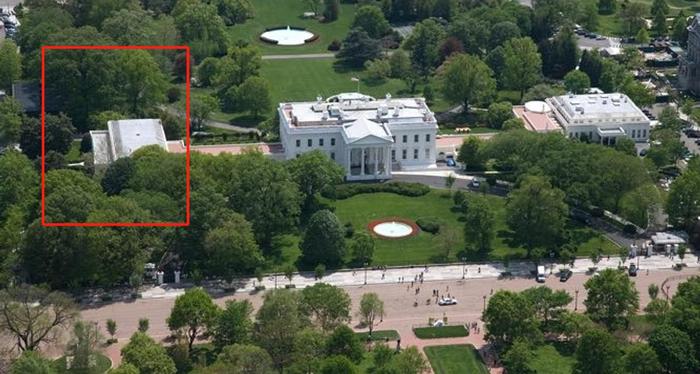
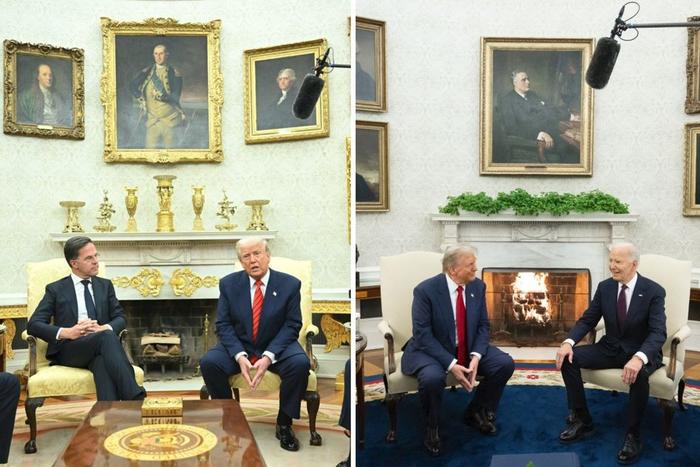
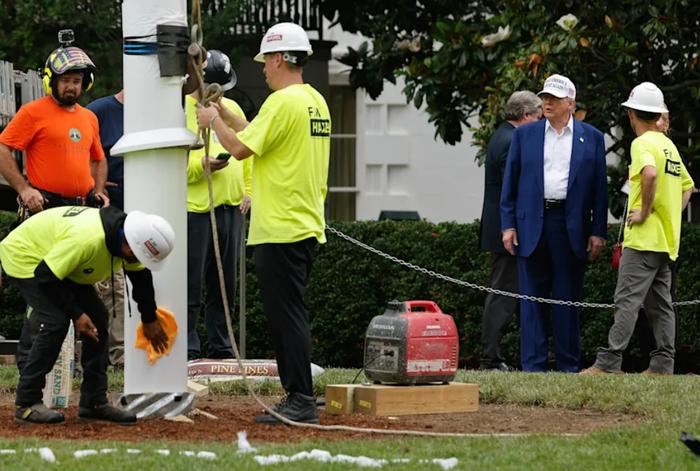
Cailian Press, August 1st (Editor: Shi Zhengcheng) – For Donald Trump, a real estate developer by trade, entering the White House comes with an “incentive”: to transform this historic mansion according to his own aesthetic standards.
Over the past few months, President Trump has made a series of renovations to the Oval Office, making it more “golden and splendid”; laying down exquisite slates on the lawn of the Rose Garden; and even personally funding the installation of two new flagpoles in the North and South Lawns.
Now, a dream that has haunted him for over a decade is about to come true: constructing a golden-lit banquet hall at the White House.
The White House announced on Thursday that it would create a “National Banquet Hall” on the east wing of the White House, covering an area of approximately 90,000 square feet (about 8361 square meters), capable of hosting events involving about 650 guests. In comparison, the current largest room in the White House, the East Wing’s “East Room,” can only accommodate about 200 people.
White House Press Secretary Karine Levy said on Thursday that the project was scheduled to start in September and be completed before Trump’s term ends. The existing offices within the east wing—including the First Lady’s office, the White House Military Office, and the Visitors’ Office—will temporarily relocate elsewhere.
The design will be handled by McClelland Architects, known for their expertise in classical styles, while construction will be carried out by Clark Construction Company, with overall project management by AECOM. The White House has already released the design drawings for the banquet hall.
(Current schematic diagram of the White House)
Levy emphasized that the approximately $200 million needed for the construction of the banquet hall will be funded by Trump himself and other undisclosed donors.
According to public information, Trump had been thinking about building a banquet hall at the White House many years ago, long before he began his campaign for public office.
David Axelrod, a senior advisor during the Obama administration, revealed that Trump had offered to help during the 2010 Deepwater Horizon drilling platform leak incident in Louisiana, and then phoned to propose building a “house for the White House.”
Axelrod recalled that Trump said, “You’re hosting banquets in these little tents. I can build a banquet hall. I’ve built the best banquet halls, you can come to Florida to see it. Let me build you a modular banquet hall that can be assembled and disassembled.”
Axelrod stated that he was unsure how to handle Trump’s proposal at the time, so he handed it over to his colleague, who then naturally dropped it.
Of course, Trump has always been resentful of being overlooked. During his 2016 campaign, he said, “I planned to spend $100 million on a banquet hall in the White House because using tents is not very good, but they refused.”
Until this year, Trump still repeatedly mentioned this matter in public, expressing his willingness to build a banquet hall as luxurious as his own “Mar-a-Lago” in the White House, but never received a response.
(The banquet hall of Trump Palm Beach Club)
Douglas Brinkley, a historian at Rice University, describes the White House banquet hall project as one of the largest projects in the history of the presidency since President Dwight Eisenhower constructed the west wing.
Brinkley interprets that Trump has always wanted to become a president known for his construction skills, so that anyone entering the White House would step into “Trump Hall.” If the banquet hall design is appropriate, it could potentially enhance his reputation; however, if it is too extravagantly ornate with gold decorations, it would only reflect Trump’s style.
According to photos released by the White House, it is clear that golden chandeliers hang from the ceiling and tables are adorned with golden chairs.
This project also presents another issue. Although the President of the United States has the power to push forward with “renovating the White House,” the way it raises funds has raised concerns.
Richard Peinert, who served as Chief Ethical Counselor at the White House during George W. Bush’s presidency, stated, “People who want to please Trump will write checks; this is a continuation of the ‘pay-to-play’ problem that has been a part of American politics for many years.”
Peinert further pointed out that the construction of a new banquet hall has expanded the White House’s reception capacity, making it easier for Trump and future administrations to open their doors to political donors, thereby further fostering a transactional atmosphere in politics.